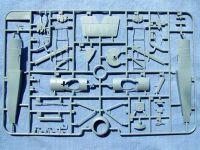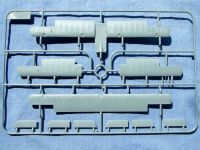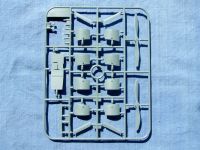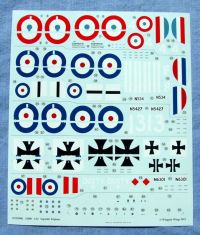Wingnut Wings | #32008: 1/32 Sopwith Triplane
Reviewed by Kevin Futter

Wingnut Wings has become something of a household name among large scale aircraft modellers, even for those who have little-to-no interest in WW1 aviation. Not only have they become a saviour to the otherwise largely-neglected WW1 aircraft modeller, but the quality of their kits is such that many modellers who have never had an inclination to build a large-scale WW1 aircraft model are suddenly filling their stashes with them!
Released towards the end of 2012, their new Sopwith Triplane kit continues this tradition of excellence. From the outset you're greeted by sumptuous box art adorning a sturdy box. No flimsy side-opening units here! But it's what's inside that really counts:
- Five sprues of mid-grey injection-moulded plastic, sealed in individual plastic bags
- One clear sprue, sealed in its own plastic bag
- One photo-etched fret
- Two decal sheets
- One magnificent instruction booklet
Plastic Sprues
As you can see from the photos below, parts moulding is exceptional, with petite sprue gates, no flash and largely unobtrusive ejector pin marks. Some of the smaller parts may still be a challenge to remove and clean up however.
Curiously, one of the sprues is marked as being for a Sopwith Pup, with the identification tag even bearing that kit's part number:
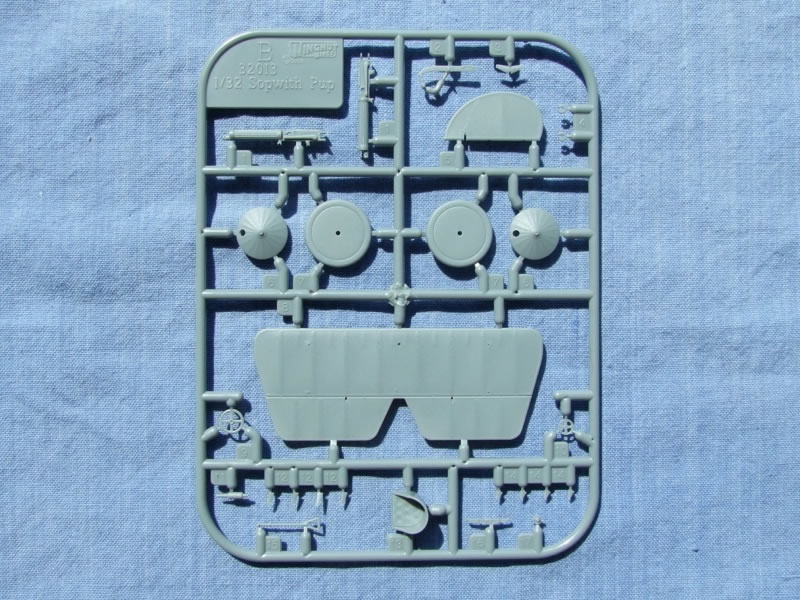
At first I feared that I may have had the incorrect sprue packed into my kit, but a quick glance at the parts layout diagrams in the instruction booklet (page 2) confirms that it does indeed belong in this kit. The extent to which Wingnut Wings is able to identify and exploit commonalities between types in its tooling designs is impressive.
Photo-etched Fret
Inside the sealed bag containing the decals is a small photo-etched fret of detail parts, sealed in its own plastic bag:
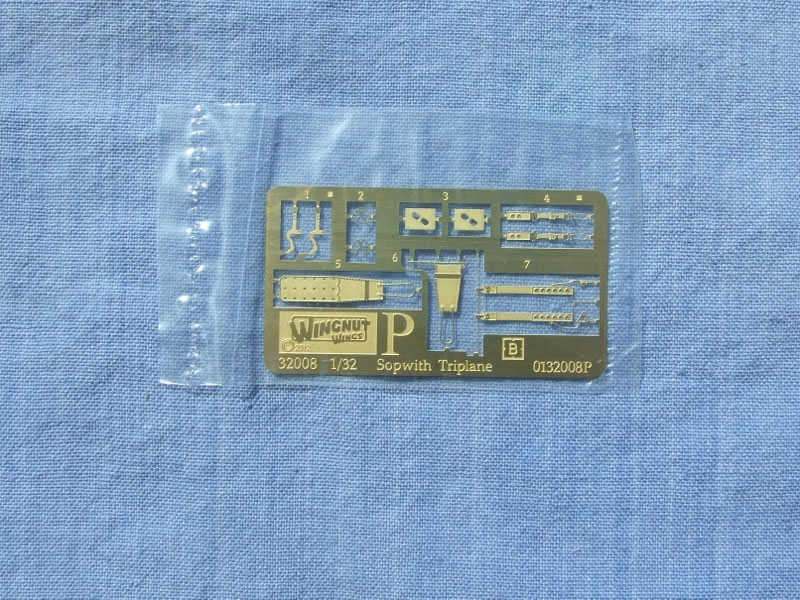
The instruction booklets supplied in Wingnut Wings kits have become legendary, and with good reason. The production values are equivalent to a glossy magazine, and to refer to them as mere instruction booklets does them a grave disservice.
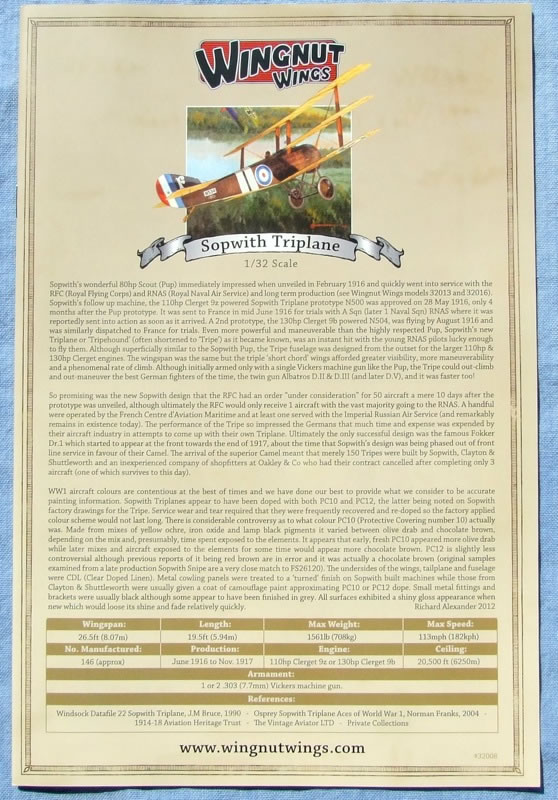
The cover features a potted history of the type, and a specifications table at the bottom. This material is also available on the Wingnut Wings webpage for the kit.
The content features colourful and highly-detailed annotated assembly drawings, complemented by captioned reference photographs and painting instructions.
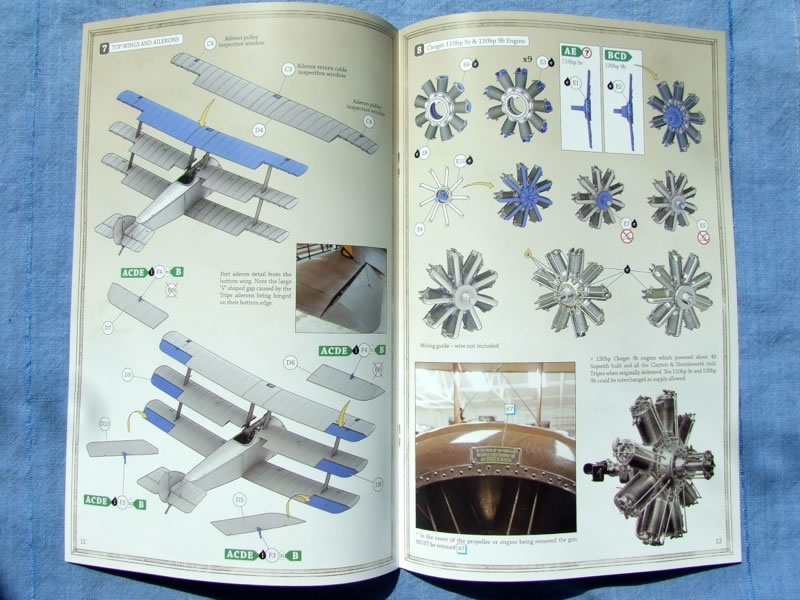
Decals and Markings
The kit includes two decal sheets: one large sheet containing all the decals for five aircraft, and a small correction sheet of stencils.
There's an extensive paint chart on the inside cover of the instruction booklet, with paint colours listed from the Tamiya, Humbrol and Mister Kit ranges. The painting and decalling guide begins on page 16, and features the following five aircraft:
- Sopwith Triplane F4 "4", Centre d'Aviation Maritime, Dec 1916 to Jan 1917
- Sopwith Triplane N534 "F", FHM Maynard (6 Victories), RP Minifie (21 Victories), RS Dallas (32 Victories), 1(N) Sqn, August 1917
- Sopwith Triplane N5427 "13", FHM Maynard, 1(N) Sqn, April 1917 (6 Victories)
- Sopwith Triplane N5429, Kurt Wusthoff(?), Jasta 4, September 1917 (27 Victories)
- Sopwith Triplane N6301 "Dusty II", R McDonald, 8(N) Sqn, May 1917 (8 Victories)
Conclusion
The Sopwith Triplane kit is less ambitious and expansive than some of the company's other recent releases, but it still represents everything we've come to expect from a Wingnut Wings kit: exceptional moulding quality, excellent detail, superb decals and industry-leading documentation. What more could you ask for? Highly recommended.
Review sample supplied by Wingnut Wings.
© Kevin Futter 2013
This review was published on Monday, February 18 2013; Last modified on Wednesday, May 18 2016



